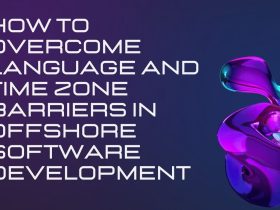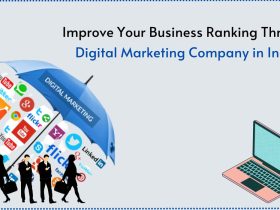Transport companies face many challenges that can compromise their profitability. In an era where the price of fuel is highly volatile and fluctuates constantly to reach new records, understanding and analyzing profitability variables is essential for them to survive in business with the help of an M&A advisor. Fortunately, the team of chartered professional accountants has the expertise in the field of transportation to help companies operating in this complex industry to be and remain profitable, regardless of the economic situation. Read on to discover solutions from our experts in the field.
When gas prices dictate your finances
Frederic is discouraged. He has just seen the costs of his company in transport increase by 30%. The price of gasoline has just reached a ceiling never seen before. He didn’t really want to raise his prices, but now he doesn’t really have a choice. However, what is its real room for maneuver? What are their competitors doing? What would his other options be?
Are you also the owner or manager of a transport company and are you faced with this type of situation? Do you wonder about the profitability of a customer, an order or a trip? Besides, how to increase the profitability of a transport company, despite the recent increases in the price of gasoline? With its lean expertise in transportation, the firm of chartered professional accountants Mallette answers this question and helps you to remain profitable, despite everything.
Transport company: how to remain profitable despite the different profitability variables?
The principle is simple because the model is based on four variables to control, but the application is not so obvious. To make a transport company profitable, you must prioritize these four variables: fixed costs, volume, performance, and price.
-
Reduce your fixed costs
The goal here is to reduce the company’s operating costs in transport as much as possible, without affecting its performance and volume.
Unfortunately, you have little control over fixed costs. Even if you want to cut the cost of rent, insurance, registrations and building maintenance costs, the savings generated would be insignificant.
In fact, in your context, the items that require special attention are: administrative salaries, professional fees, advertising, promotion, donations and sponsorships as well as truck maintenance costs. The questions you need to ask yourself are: could I operate efficiently with less staff in the offices? Are my marketing efforts translating into an annual increase in my sales? Are my mechanics efficient? Should I outsource this activity instead? Are warranties on parts effectively tracked? Am I optimizing the timing of the replacement of tires, brakes, and various critical parts? Replacing a part too quickly generates a significant maintenance cost, but waiting for the truck to break down is even more expensive.
-
Increase your volume
Regarding the volume, the idea is to sell as many kilometers as possible in order to evenly distribute the fixed costs per kilometer. For example, suppose your business accrues $700,000 in annual fixed costs for a normal volume of 600,000 km. The fixed cost per km would then be $1.17/km. Now imagine that for the same fixed cost you could sell an additional 200,000 km, the fixed cost per km would drop to $0.88/km. Want to increase your profits? Sell as many trips as possible! Easy to suggest, but not so easy to implement because your sales volume depends on two important factors: the number of trucks and trailers available and the number of drivers available.
In fact, your fleet of trucks and trailers is limited to your financial capacity, but also limited by the number of truckers available. The transportation industry is currently facing a shortage of truckers, which means that even if you had the opportunity to double your sales, it will be very difficult and your success will depend on your ability to recruit and retain your employees. This is an important issue that should not be overlooked and it is for this reason that you must implement strategies to attract and maintain quality human resources.
3.Improve the performance of your transport
Did you manage to increase your sales volume? Cheer! However, your transport must be efficient and profitable. Because if you accept transport and each time you come back with an empty trailer, the profitability will not be there.
In your context, performance is about optimizing the routes of your various transports in order to avoid returns with an empty trailer. The work of the dispatcher then becomes vital. If for each trip sold, you have the possibility of finding a return trip, it pays off! Performance also means: avoiding toll booths, choosing the best time to avoid traffic jams, reducing waiting times for loading and unloading, reducing truck fuel consumption through better driver behavior or through the acquisition of newer trucks.
Since the trucker has a direct impact on gas consumption. Do not hesitate to train your employees so that they understand. The importance of the way they drive on the company’s costs. Some carriers even go so far as to give bonuses by measuring sudden braking and departures. The length of time the engine is idling, respecting speed limits, etc.
-
Set your price correctly
Now that you have your indirect costs, your volume and your performance well under control. Your price must also be adequate. Want to make more profit? It’s simple, you have to sell more than what your transport costs you. However, do you really know how much your transport costs you? Have you factored in fuel costs, toll charges, your driver’s salary and all the fixed costs of the business? If this is the case. You are one of the few people who have a good grasp of its cost price.
Even if your room for maneuver is relatively limited in terms of price. You must analyze the profitability of each trip, identifying your direct costs and adding fixed costs and. Above all, taking into account or not the income generated by a return. with a full trailer. The kilogram, the cubic foot or according to any other pricing strategy.
Over the years, chartered professional accountants have been able to help. A multitude of transport companies set up powerful cost calculation tools that. Allow the cost of transport to be analyzed according to the number of pick-up points. The number of destination points, the distance to be covered. The performance of the truck according to liters per 100 km, etc.
Briefcase, there to lead your business to profitability!
Is your business currently experiencing significant cost increases? You absolutely have to adapt to this new reality. As we mentioned above, your options are not many, but you need to analyze each strategy carefully. The companies that. Will come out on top are those that have been able to put in place effective cost calculation. Tools that allow them to make strategic and profitable decisions. But, it is not always easy to do this analysis internally. This is where Mallette comes in!







Leave a Reply